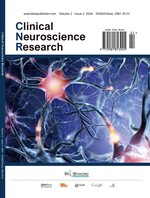Abstract
Objective: To evaluate the therapeutic efficacy of levetiracetam (LEV) + oxcarbazepine (OXC) for post-stroke secondary epilepsy (PSE) in the elderly. Methods: 92 patients with PSE admitted to the hospital between July 2021 and July 2023 were selected. Random number table grouping was used, with 46 cases in the combination group, selecting LEV + OXC treatment; and 46 cases in the conventional group, selecting OXC treatment, comparing the treatment effect of the two groups. Results: The total effective rate of the combination group was higher than that of the conventional group, and the difference was statistically significant (P < 0.05). Before treatment, in the comparison of the epilepsy-related indexes and blood indexes between the groups, the difference was not statistically significant (P > 0.05). After treatment, the epilepsy-related indicators as well as blood indicators of the combination group were better than those of the conventional group, and the difference was statistically significant (P < 0.05). The adverse reaction rate of the combination group was lower than that of the conventional group, and the difference was statistically significant (P < 0.05). Conclusion: Implementing LEV + OXC therapy for PSE patients can enhance the effectiveness, improve the degree of epilepsy, regulate the blood indexes, and have high therapeutic safety.
References
Zhang DL, Li AH, 2023, Effect Analysis of Levetiracetam Combined with Oxcarbazepine in the Treatment of Patients with Epilepsy Secondary to Stroke. Journal of Epilepsy and Neurophysiology, 32(5): 295–300.
Wang SJ, Chen HR, Pan BY, 2023, Effectiveness of Butalbital Combined with Levetiracetam in the Treatment of Secondary Epilepsy after Stroke. Journal of Molecular Diagnosis and Therapy, 15(9): 1646–1649.
Guo H, Qi SB, Zhou T, et al., 2020, Clinical and Literature Case Analysis of Levetiracetam-associated Thrombocytopenia. Journal of Adverse Drug Reactions, 22(12): 677–682.
An TJ, 2021, Effectiveness and Safety Analysis of Oxcarbazepine Treatment for Secondary Epilepsy after Stroke. China Modern Drug Application, 15(5): 100–103.
Bai YM, Du KX, Chen H, et al., 2023, Study on the Effects of Sodium Valproate, Oxcarbazepine, and Levetiracetam on the Development of Different Energy Zones in Children with Epilepsy as Assessed by the Chinese Version of the Griffiths Mental Developmental Assessment Scale. Chinese General Medicine, 26(23): 2918–2922.
Xi GM, Chen ZD, 2023, Efficacy of Levetiracetam Tablets Combined with Oxcarbazepine Tablets in the Treatment of Epilepsy Patients and the Effects on Serum miR-222 and BAFF Levels. Hainan Medicine, 34(3): 318–321.
Kang LL, Miao CY, Gao HF, 2023, Efficacy of Levetiracetam Tablets Combined with Oxcarbazepine Tablets in the Treatment of Epilepsy and the Effects on Serum miR-222 and BAFF Levels in Patients. Hainan Medicine, 34(5): 625–628.
Guo LQ, Gui BS, 2022, Observation on the Effect of Different Drugs in the Combined Treatment of Post-stroke Seizures in the Elderly. Heilongjiang Medical Science, 45(1): 172–173.
Qin Z, Ye F, Li YJ, et al., 2019, Analysis of the Effects of Antiepileptic Drug Monotherapy and Combination on the Efficacy, Prognosis, and Seizure Reoccurrence of Post-stroke Seizures in the Elderly. China Primary Medicine, 26(10): 1203–1207.
Li CY, Xu LP, Wang SS, et al., 2023, Analysis of Retention and Effectiveness of Monotherapy with Different Antiepileptic Seizure Drugs in Post-stroke Epilepsy. Chinese Journal of Cerebrovascular Disease (Electronic Edition), 17(4): 325–330.
Feng Q, Zhang B, Yi XY, et al., 2019, Study on the Retention Rate of Traditional and Novel Antiepileptic Drugs in Adult Patients with Epilepsy and the Interaction of Related Risk Factors. Chinese Journal of Modern Medicine, 21(1): 11–15.
